Long-time UNITE HERE Local 2
President Mike Casey Stepping Down
What’s ahead (and behind) for San Francisco’s iconic hotel workers union,
and an interview with Casey’s successor, Anand Singh
SF Bay View
May 11, 2015
Copyright © 2015 Marc Norton and Jeff Myers
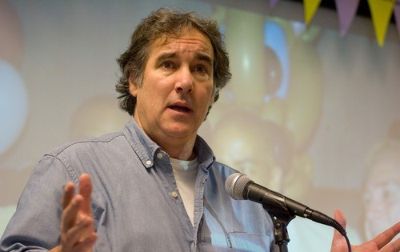
Mike Casey, who has led San Francisco’s UNITE HERE Local 2 for over twenty years, is stepping down. Casey was first elected President of Local 2 in 1994, after a tumultuous period in the 1970s and 1980s that resulted in large membership losses. He has presided over a period of stabilization, consolidation and growth. Local 2, once known as the Culinary Union for its many restaurant contracts that have long since disappeared, is now better known as the Hotel Union.
The election for the new leadership was on Friday, May 8, but there was no drama there. Anand Singh, Casey’s handpicked successor, was running without any real opposition. Singh, of Indian descent, will be the first non-white President of Local 2, a union overwhelmingly made up of workers of color. But there is no reason to believe that this leadership change signals any difference in the Union’s policies or strategic perspective. Singh has been a loyal lieutenant to Casey for many years.
Singh is 35. He was born the same year as one of the defining moments in Local 2’s history – the month-long 1980 strike of 6,000 enraged San Francisco hotel workers. Singh grew up in Thousand Oaks in Southern California, went to UC Berkeley, and worked for a period with EBASE, an East Bay non-profit that describes itself as "Building Power with Workers, Community and People of Faith."
Singh’s work with EBASE brought him together with UNITE HERE Local 2850 in the East Bay. From there he was recruited to work for Local 2, joining the San Francisco staff in 2004, when he was 24 years old, just before another defining moment in Local 2’s history – the 51-day strike and lockout of 14 San Francisco hotels.
Singh has never worked in the hotel, restaurant or hospitality industry.
Local 2 today is solid in what has become its core membership – workers in large, luxury Class A hotels in San Francisco. But this is an island of stability in the midst of a stormy sea. While Local 2 faces no immediate crises, there are underlying problems that are festering just below the surface that may well challenge Singh.
What happens in Local 2 is of major significance to the labor movement in San Francisco, one of the most storied "union towns" around. Local 2 is viewed by many as the poster child for progressive unionism in San Francisco, playing second fiddle only to the renowned International Longshore and Warehouse Union (ILWU), the chief protagonist in the famed 1934 San Francisco General Strike.
But, not unlike other unions, the reality for Local 2 workers is a bit more complicated than it might seem to the outside observer.
This article is informed by our history as long-time members of Local 2. Marc first joined Local 2 in 1976, and is a former dishwasher, busser, cook and bellman, currently working as a cashier at the Giant’s ballpark. He served on the elected hotel contract negotiating committee during the 1980 hotel strike, and most recently was involved in a fierce battle at a small hotel formerly named Hotel Frank, now Hotel G. Jeff first joined Local 2 in 1980, was elected Shop Steward at the Franciscan on Fisherman's Wharf in 1983, served on the 1984 restaurant strike committee and the 2004 hotel contract negotiating committee. Jeff has worked for 25 years at the St. Francis Hotel as a banquet server and shop floor activist.
LOCAL 2 ABORNING
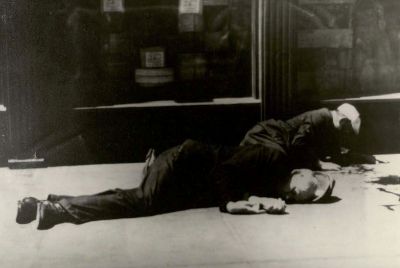 The culinary and hotel workers in San Francisco have been organized in one form or another for over a century. One of the two workers murdered by the San Francisco police on Bloody Thursday in 1934 that led to the General Strike was a Union cook named Nick Bordoise. The culinary and hotel workers in San Francisco have been organized in one form or another for over a century. One of the two workers murdered by the San Francisco police on Bloody Thursday in 1934 that led to the General Strike was a Union cook named Nick Bordoise.
But to understand Local 2 today, it is important to understand the trajectory of its development in the modern era.
Local 2 was born of the merger of several craft unions in 1975. The merger was decreed by then International Union President Edward Hanley. Although UNITE HERE officials vehemently deny it, Hanley is widely believed to have been put in place by Joey "Doves" Aiuppa, a prominent Chicago mobster. Mobster or not, Hanley and his Chicago-based cohorts presided over a regime of corruption and easy money for 25 years, wallowing in the dues money of some of the lowest-paid union workers in the country, and in the pension contributions from their employers.
Hanley intended the 1975 merger creating Local 2 to consolidate his power. Ironically, it had the opposite effect. In those days, it was the more privileged white, male servers, bartenders and cooks who ruled the roost. But the merger threw thousands of neglected room cleaners, overwhelmingly women of color, into the mix. In 1978, the first time Local 2 members got a chance to elect their leadership, they threw Hanley’s guy in San Francisco, Joe Belardi, out with the trash.
The drama that followed the 1978 election can only be encapsulated here, including the formation and reformation of several rank-and-file caucuses at a time when insurgent activists were still riding high in the workers movement; monthly confrontations at union meetings, sometimes involving reactionary gun-toting thugs; an International-imposed trusteeship; and a tumultuous month-long strike in 1980 by 6,000 workers at nearly every hotel in town, forced on Union officials by an enraged membership, ending with a bargain struck in a secret meeting in Los Angeles by Hanley and the hotel bosses that remains highly controversial to this day.
In the aftermath of the 1980 hotel strike there was a disastrous restaurant strike in 1984, which collapsed amidst accusations of sabotage by Hanley’s henchmen. There were two highly contested Local 2 elections during this period, in 1982 and 1985, both fraught with irregularities, before things settled down a bit. Hanley’s candidates held on in both elections.
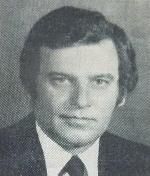 In 1995, the Department of Justice imposed a federal "monitor" on the International Union, with the power to remove Union officials accused of corruption or mob connections, from both the International and local unions. Hanley was retired in 1998. He died two years later in a collision on a country road in Wisconsin. In 1995, the Department of Justice imposed a federal "monitor" on the International Union, with the power to remove Union officials accused of corruption or mob connections, from both the International and local unions. Hanley was retired in 1998. He died two years later in a collision on a country road in Wisconsin.
But Hanley’s legacy is hardly dead – John Wilhelm, who succeeded Hanley, and D. Taylor, the current International President, are two white men who both came up during Hanley’s reign. They shed the mob connections and the taint of corruption, but some of the Godfather mentality remains.
Casey also came up during the Hanley years. Like Wilhelm and Taylor, Casey was never personally touched by any allegations of corruption. But all of their careers as labor officials depended upon adopting the proverbial hear-no-evil, see-no-evil, speak-no-evil posture.
Singh will be the first President of Local 2 who did not cut his teeth in the Union during Hanley’s reign.
ENTER MIKE CASEY
Mike Casey first became President of Local 2 in 1994. Casey, the son of union activists, grew up in Stockton and Sacramento, and worked with farm workers early in his career. He was hired by Local 2 in 1986. Julius Getman, a prominent labor scholar, wrote a book in 2010 in which he quoted Marc, one of the authors of this article, saying that Casey "is the best thing we’ve had as long as I’ve been around." Getman got lots of things very wrong about Local 2 in his book, but he quoted Marc right.
Casey brought order out of near-chaos. In the aftermath of the 1980 hotel strike and the 1984 restaurant strike, new Class A hotels opened up all over town without a contract. Density, that is the ratio of union shops to non-union shops, was dropping like a rock in the San Francisco hotel industry. Casey focused organizing on some of these big hotels. It was not an easy process, and it took years, but eventually Local 2 won contracts at the Parc 55 and the Marriott. Casey went on to win recognition for Local 2 at newly built Class A hotels in the City, such as the Four Seasons, the W, and the Intercontinental.
In 2004, Local 2 called a two-week strike at four Class A hotels. The hotel bosses responded by locking out workers at fourteen Class A hotels. The Union met the challenge head on, and beat back the lockout after 51 days on the line. Local 2 settled the Class A hotel contract in 2006.
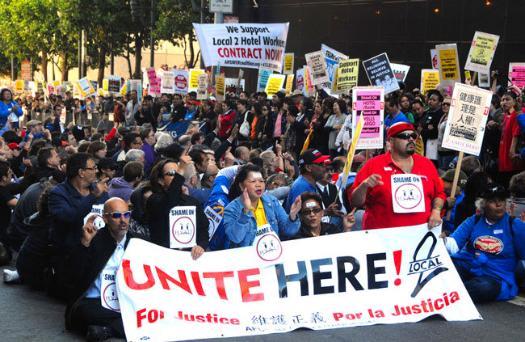 |
Over the years, the Casey administration has won a well-deserved reputation for Local 2 as a scrappy union that doesn't let up once it gets involved in a fight.
The most important key to Casey’s success has been the building of a base of support among room cleaners in the hotels. These workers had been sorely neglected by the old guard, and had directly led to their downfall in the 1978 Local 2 election. The process of building support among the room cleaners began before Casey arrived, but he continued and rationalized the process. Today, these are the archetypal workers that Local 2 calls to mind, rather than the front-of-the-house waiters and bartenders of times past.
During Casey’s administration, the Class A hotel contracts have been maintained and expanded. Wages and working conditions have steadily improved. Pensions have increased dramatically, a defined-benefit plan that provides around $1,000 per month for 20-year employees.
Most significantly, Local 2 has preserved one of the best medical plans in the country – full coverage paid entirely by the employers, a $10 fee for most doctor visits, and $10 per month for family coverage. People’s mouths usually drop open when we tell them about our medical coverage.
Contracts have recently been renewed at the Giants ballpark and the San Francisco airport. Both of these contract campaigns required short strikes.
Casey has wisely chosen a good time to step down. Class A hotel contracts are in place until 2018. Casey’s support for Singh provides for an orderly succession. Casey has pledged to stay on staff for a period to lend guidance to the new administration. Casey clearly planned for this transition, and his planning serves Local 2 well.
TROUBLE AHEAD?
But Casey is leaving some problems for Singh and Local 2 to solve.
While Casey has won big gains at the Class A hotels, Local 2 has been unsuccessful to date in a major organizing drive that has been going on for several years at Le Meridien and Hyatt Fisherman’s Wharf. There are also some big hotels that have been impervious to any organizing drive, such as the Hotel Nikko and the Mandarin Oriental (now Loews Regency). While Class A hotel density has vastly improved since the dark days of the 1980s, density is still a bit less than it was prior to the 1980 hotel strike.
Few new large, Class A hotels have been built in recent years. What is getting built are small, boutique hotels, which are gaining increasing market share in San Francisco. Local 2 has made little effort to organize new small hotels. Consequently, the Union has been steadily losing density in this sector of the hotel business. Casey also badly fumbled a hard-fought, five-year campaign in the small hotel sector at Hotel Frank, now Hotel G, a campaign that is far from over – more on that later.
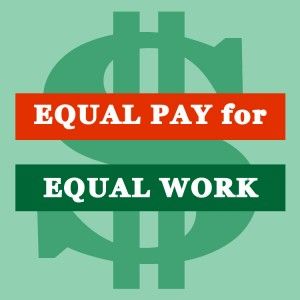 Local 2’s medical plan extends to nearly every Local 2 worker in San Francisco. But the workers in the small hotels do not share equally in wages, working conditions and pension benefits enjoyed by Class A hotel workers. The wage differential in particular has been widening over the years between the Class A hotels and the small hotels. Local 2’s medical plan extends to nearly every Local 2 worker in San Francisco. But the workers in the small hotels do not share equally in wages, working conditions and pension benefits enjoyed by Class A hotel workers. The wage differential in particular has been widening over the years between the Class A hotels and the small hotels.
The justification for this used to be that the small hotels were family-owned businesses. But today small, boutique hotels are almost all corporate, many managed by the same international conglomerates that run the Class A hotels. Many small hotel workers feel like second-class Union members.
Local 2 remains practically invisible in the San Francisco’s many restaurants, despite the long proud history of the servers, bartenders and cooks unions before the merger. San Francisco is now flooded with fast food joints, and it is SEIU, not UNITE HERE, that is making news with the Fight for 15 campaign.
This is not just a matter of failed glory, but of the future as well. Many hotel workers get their start in restaurants. If these workers don’t learn about unions there, they don’t carry that history with them into the hotels. In addition, the non-union scene in the lively restaurant culture of San Francisco seriously tarnishes the City’s reputation as a union town.
The vitality of Local 2’s Hiring Hall has suffered as a result of the loss of the restaurant sector, which used to feed experienced workers back into the Union houses by the hundreds as needed. The Casey administration has never understood the negotiating leverage this represents and has seriously neglected the Hiring Hall.
One thing that has slipped badly under Casey’s administration is the ability to get timely contracts. Fights almost invariably go on for years. It has gradually become routine for contracts to be extended a year, two years, three years, even more. Sometimes when a contract is settled retroactively, there are only a few months before its expiration date.
This is partly the result of the breakdown of the old employer negotiating groups, such as the Hotel Employers Association, requiring separate negotiations with multiple employers in the same sector. But it is also the result of Casey’s tight control of negotiations, requiring his personal leadership in nearly every negotiating session. Strong leaders sometimes prevent the rise of new leaders, wittingly or unwittingly.
Whatever the cause, working under expired contracts for years on end means that workers are always playing catch-up, often foregoing raises for years. This is not something that endears workers to the Union.
STAFF-DRIVEN UNION
What underlies these challenges is the fact that Local 2 is a classically staff-driven union, despite the hype and the veneer of democracy. A good and well-placed friend recently asked what criticisms there might be of the current Local 2 administration. When a lack of democracy was mentioned, her response was a guffaw and a hearty "what’s new?" So this shouldn’t shock too many labor activists.
Regular mass mobilizations, demonstrations and picket lines of Latino, Filipino, Chinese, Asian and Black workers have created a progressive aura around Local 2. But the difference between the image and reality of Local 2 democracy is striking, and not lost on many members.
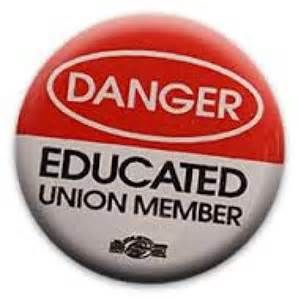 The issue here is not just one of abstract principle. Unions that cultivate their membership for ideas, initiative and focus build up a base that moves the organization forward through hard times and good times. Unions that rely on a handful of smart officials to do all their thinking and strategizing can miss important opportunities, or can decay, even go up dead ends. Local 2 has many intelligent and dedicated members whose contributions are seldom seriously brought into play in the development of Union policies and strategy. The issue here is not just one of abstract principle. Unions that cultivate their membership for ideas, initiative and focus build up a base that moves the organization forward through hard times and good times. Unions that rely on a handful of smart officials to do all their thinking and strategizing can miss important opportunities, or can decay, even go up dead ends. Local 2 has many intelligent and dedicated members whose contributions are seldom seriously brought into play in the development of Union policies and strategy.
Regular Local 2 meetings by-and-large disappeared in the mid-1980s. Instead, business is conducted, such as it is, at general assemblies to which only handpicked workers are invited. While the Local 2 officials can mobilize a good crowd to these convocations, these meetings are not conducted by Roberts Rules of Order, or anything even remotely similar. They are only staged events, designed to transmit and gain support for decisions already made by Casey and his close advisors.
There is no Local 2 newspaper. Marc once suggested starting up a Union newspaper to Casey. The blood drained from his face and the conversation ended rather abruptly. Indeed, workers really have no idea what is happening at other workplaces unless they get the canned story from a staff member assigned to promulgate it. Even that is infrequent at best. Casey here is playing an old game – divide and conquer. It is not the stuff that maximizes solidarity.
Contract negotiating committees have the appearance of democracy, but usually only the appearance. Back in the late 1970s and early 1980s, when the rank-and-file movement was at its peak, we actually elected our negotiating committees. Today they are rump assemblies, often too large to be anything other than an audience for Casey’s show. Sometimes they are handpicked individual workers. Other times the real negotiations take place between Casey and the boss with little transparency at all.
Grievance handling (surprise, surprise!) is a big issue with many members, including Class A hotel workers. Business agents are usually too busy mobilizing for the latest fight to do justice to most shop floor beefs, assuming that they are even inclined to do so.
Once upon a time we had elected Shop Stewards. Nowadays, Shop Stewards are appointed by the administration, and must pass the loyalty test to be seriously considered. That doesn’t encourage critical thinking and rank-and-file activity. Increasingly on the shop floor, the Union is referred to as "them," not "us."
The growing penetration of our workplaces by non-Union workers in a variety of guises, including as a result of lax contract enforcement, also weakens solidarity and confidence in the leadership.
The watchword of the Local 2 rank-and-file movement in its heyday was a demand for elected business agents. A bylaw amendment establishing elected business agents was actually passed at a Union meeting in the early 1980s, but then quickly vetoed by Hanley. Ask Casey about taking away his power to hire and fire staff, and you will earn a quick trip to the woodshed. His administration evaluates staff based on the number of workers they turn out to meetings and picket lines, not by how well they enforce contracts.
How, you might ask, despite all these difficulties, has Casey kept the Union afloat. The answer is simple. Casey is one smart guy. He works his tail off, is very capable and largely benevolent. He is not in it for the money.
In our judgment, Casey does have the best interests of the Union at heart. As one Union brother once put it, he has "honest tendencies." He has significant support among the members, and no significant opposition within his administration. And, last but not least, there are some very tough members who rise to the challenge and bring the boss to heel at critical times.
But the problems Singh will inherit – grievance and contract enforcement issues, a tradition of expired contracts, falling density in the small hotels, a thoroughly non-union restaurant sector, and nothing even resembling real Union democracy – may bedevil him and his administration, unless he critically evaluates the Casey years and looks to rectify what needs to change.
HOTEL FRANK: THE NEVER-ENDING STORY
Hotel Frank is a case in point that will test Singh and the new Local 2 administration.
We have to say here that we are very personally involved in the Hotel Frank story. Marc worked there as a bellman for 12 years, before he was summarily and illegally fired in 2010. The National Labor Relations Board (NLRB) reinstated him two years later, just before the hotel shut down and all the workers there were put on the street.
Hotel Frank was a small, boutique hotel downtown, located just a block off Union Square. It had a union contract for nearly 40 years. Its location alone meant that it was a goldmine for any rational owner. But in 2007 an apparently irrational owner bought the hotel, drove it into bankruptcy and was forced to turn the keys over to Wells Fargo. The bank brought in an out-of-town union-busting outfit called Provenance, and the fight began.
Without going into every twist and turn of this fight, let it be said that a group of plucky workers at Hotel Frank dragged Local 2 into a very public and bitter fight. Hotel Frank workers never went on strike, but they declared a boycott, picketed the hotel for two years in a loud, sustained and militant way – in a very visible space right off Union Square – and recruited many supporters, including Jeff, to join the line. Eventually, Provenance packed up and split town, tails between their legs. You can read all about it, if you want, here.
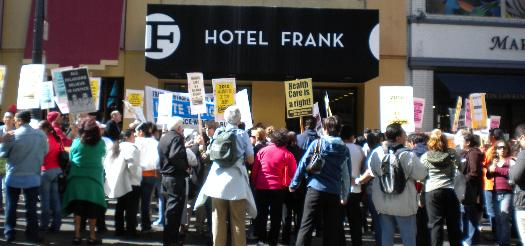 |
Victory? Not even close. On their way out of town, Provenance shut down the hotel and sold it to new owners. The Union negotiated a severance package, but not anywhere near enough to carry workers through the 18 months that the hotel remained closed. As part of this deal, Local 2 scrubbed its website of any mention of Hotel Frank. Nevertheless, Casey proclaimed to all who would listen that the number one demand on the new owner would be that they hire back the old Hotel Frank workers. We even believed that he meant it, for a while.
As Casey told Marc, just as Hotel Frank was about to be reborn as Hotel G, "I am not going to be dragged into a fight that we don’t need." And that, my brothers and sisters, meant not fighting to get everybody’s job back. Casey negotiated a nice little sweetheart deal. The Union got recognition. The back-of-the-house (room cleaners and housemen) got their jobs back. The front-of-the-house (front desk, bellmen) did not. The workers who were left on the street got some money, but no job.
Casey got his deal ratified by telling the workers that they would have to fight on our own if they didn’t take his deal. Casey was clearly not going to mobilize the Local 2 staff, much less the Union membership, on their behalf, leaving workers with little choice but to accept what was offered. And so a bunch of Hotel Frank workers, including many of the leaders (notably including Marc), got the shaft.
Casey also told Hotel Frank workers that the new owners promised that there would be a Class A hotel contract in place the day the new Hotel G opened. The hotel opened a year ago. There is nothing even close to a Class A contract. There is instead an "interim" contract, one that even Casey describes as "lousy."
There is no language about the workload for the room cleaners, one of the bedrock contract provisions in every other Union hotel. Workers at Hotel G work 8-and-a-half hours for 8 hours pay; the standard in every other Union hotel is an 8-hour day. We could go on and on. These are the very same working conditions that drove Hotel Frank workers into the fight five years ago.
If Casey or Singh, who was deeply involved in the negotiations with the Hotel G owners, think that other employers have not noticed how the Hotel Frank/Hotel G workers are being punished for their militancy, they have another think coming. A Union that doesn’t protect its leaders is a Union in trouble.
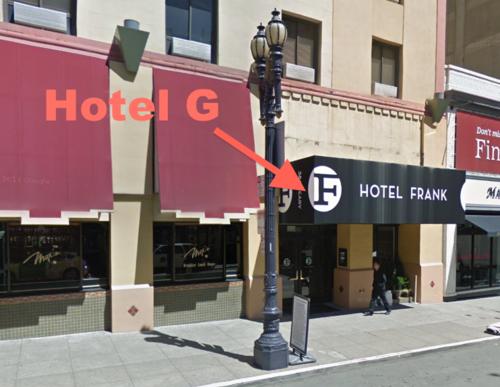 |
AN INTERVIEW WITH ANAND SINGH
In preparation for writing this article, Marc conducted an interview with Anand on Thursday, April 30. Marc and Anand have known each other for several years, focused on the Hotel Frank/Hotel G struggle. There is a significant degree of mutual respect, although there is also a recognition that they see Union matters very differently.
 The interview was an on-the-record event, although informed by the many off-the-record discussions Marc and Anand have had. Marc asked all the big questions – what priorities do you have for your administration; how will you deal with the different situations in the different sectors Local 2 represents in the hospitality industry; how will you seek to preserve and improve our medical plan, pension, wages and working conditions; and how do you view the question of Union democracy. The interview was an on-the-record event, although informed by the many off-the-record discussions Marc and Anand have had. Marc asked all the big questions – what priorities do you have for your administration; how will you deal with the different situations in the different sectors Local 2 represents in the hospitality industry; how will you seek to preserve and improve our medical plan, pension, wages and working conditions; and how do you view the question of Union democracy.
What was remarkable was how little there is to report. Singh said he was recruited by Casey to run for President, that he was "humbled" by this choice, that he admired Casey as a mentor and looked to his leadership as a guide to the future. He says he has asked Casey to stay on staff for a period, and that Casey has agreed.
Singh knows that Local 2 has big challenges ahead, but doesn’t have any plans to change the Union’s policies or organizing strategy in any fundamental way. He sidestepped any issues around falling density among small hotels, the non-Union restaurant sector, contract enforcement issues, and the problem of expired contracts. He would not comment on the record about the Hotel Frank/Hotel G situation, citing "impending negotiations."
Singh was diplomatic when pressed about questions around Union democracy, but appeared satisfied by the way Local 2 business is conducted today. He spoke at length about getting to know Union members better, and about taking his leadership from the workers. We will see how much of this is reality, and how much of this is rhetoric.
WHAT’S NEXT FOR LOCAL 2?
Where does this leave Local 2 members, or non-Union hotel, restaurant and culinary workers looking to improve their lot? It leaves us in the same trajectory as that of the Casey administration, but with an untested leader cautiously feeling his way forward.
But the past, as Shakespeare once famously said, is just prologue to the future. The labor movement faces growing challenges to say the least. An artillery shell sent on its way by a powerful explosive eventually loses its force and comes to earth. It may explode or it may be a dud, but it only goes so far. New shells need to be fired, new weapons created, new strategies developed, if a war – including the class war – is to be won.
Singh will have a powerful force at hand – the members of Local 2, as well as thousands of non-Union hotel, restaurant and culinary workers. If he can lead in the growth and development of a Union presence that inspires these workers to struggle for a better life, and if he embraces a vision of rebuilding the Union movement both within and without Local 2, he has the potential to be a successful leader.
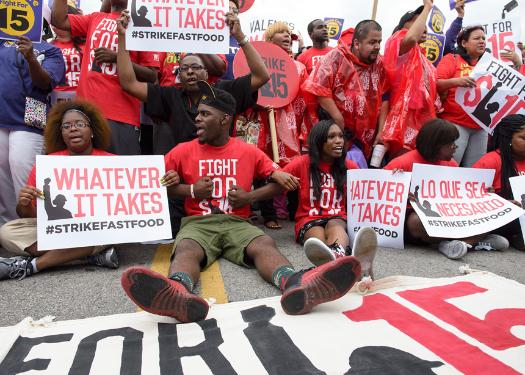 |
But if Singh merely seeks to replicate current administration policies and continue business as usual we will likely face the proverbial "times that try men’s souls." And, in the context of a labor movement that is itself in deep crisis in its daily battle with capital, those times could be very trying indeed.
|